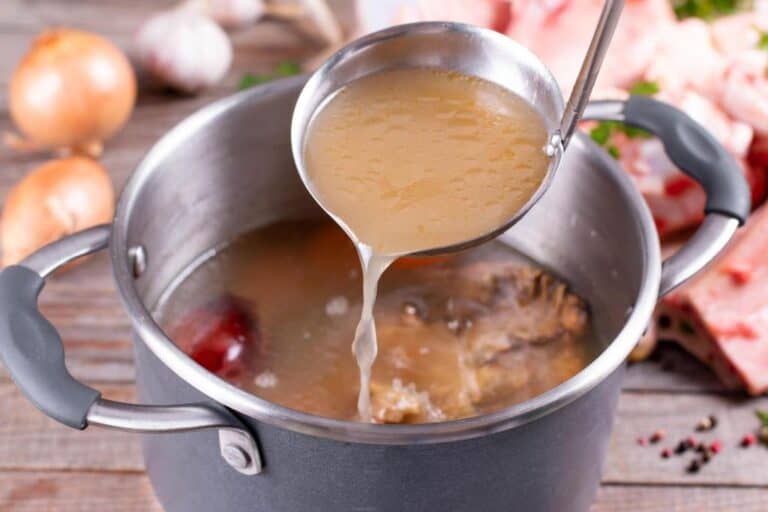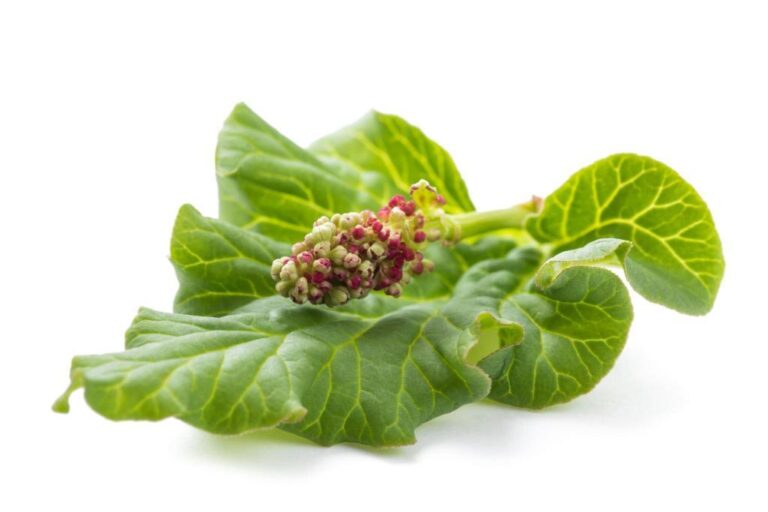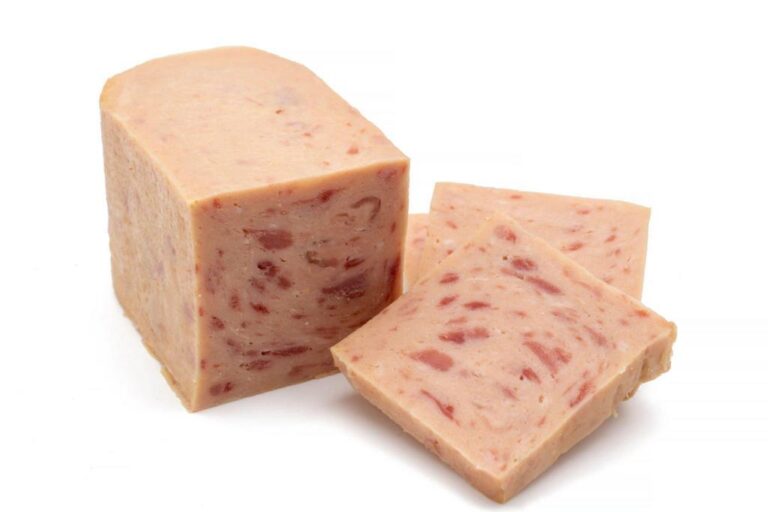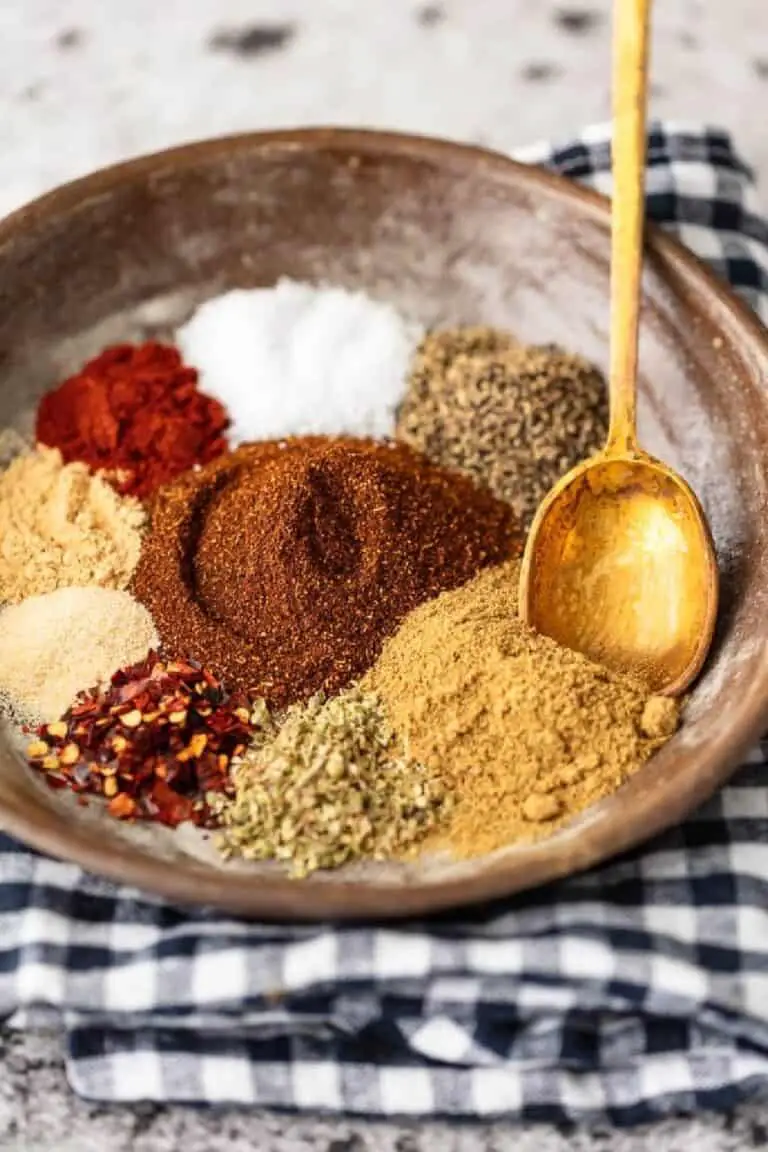Can You Reheat Chicken Soup Twice Without Compromising Safety or Taste?
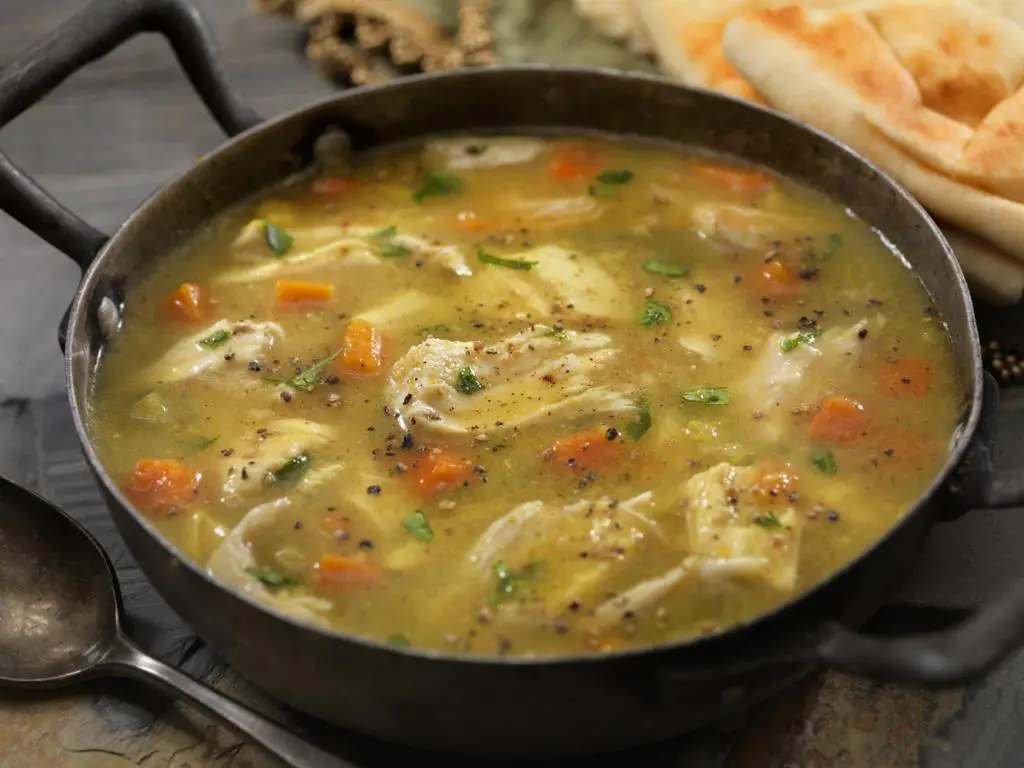
Chicken soup has long held a special place in kitchens around the world. From its comforting aroma to its nourishing properties, it’s no wonder that this humble dish remains a beloved option for many mealtimes. Whether it’s enjoyed as a remedy during the cold winter months or simply savored for its rich flavors, chicken soup has become an iconic comfort food.
However, with the increase in home cooking and batch preparation, questions about how best to handle leftovers have begun to arise. Specifically, one question looms large: Can you reheat chicken soup more than once?
While some are confident in their ability to reheat leftovers multiple times without hesitation, others approach this topic with considerable caution due to lingering concerns about food safety.
This article will talk about reheating chicken soup and try to find out if it is safe and a good idea to do so more than once. We’ll address common misconceptions surrounding this practice and explore professional recommendations backed by scientific evidence.
So if you often find yourself wondering whether your leftover chicken soup can be reheated again without compromising taste or health, read on for valuable insights and guidance that will help you make informed decisions when handling your favorite bowl of warmth.
Understanding Food Safety
When it comes to leftover chicken soup, understanding the principles of food safety is crucial. Proper storage and reheating techniques can prevent foodborne illnesses.
One basic principle to keep in mind is the 2-hour rule. According to this rule, perishable foods that have been left out at room temperature for more than 2 hours should be discarded. This includes chicken soup.
When you are reheating chicken soup, make sure it reaches a safe internal temperature of 165°F (74°C). Using a food thermometer is highly recommended. It helps, as visual cues alone are not enough to determine if the soup has been heated adequately. Reheating leftovers below this temperature may not effectively kill any bacteria present, which could lead to illness upon consumption.
It is worth noting that reheating broth-based soups, like chicken soup, is super important. They tend to have a shorter shelf life compared to other dishes due to their higher moisture content. They should be consumed or refrigerated promptly after cooking and properly stored in shallow containers for quicker cooling.
Can You Reheat Chicken Soup Twice?
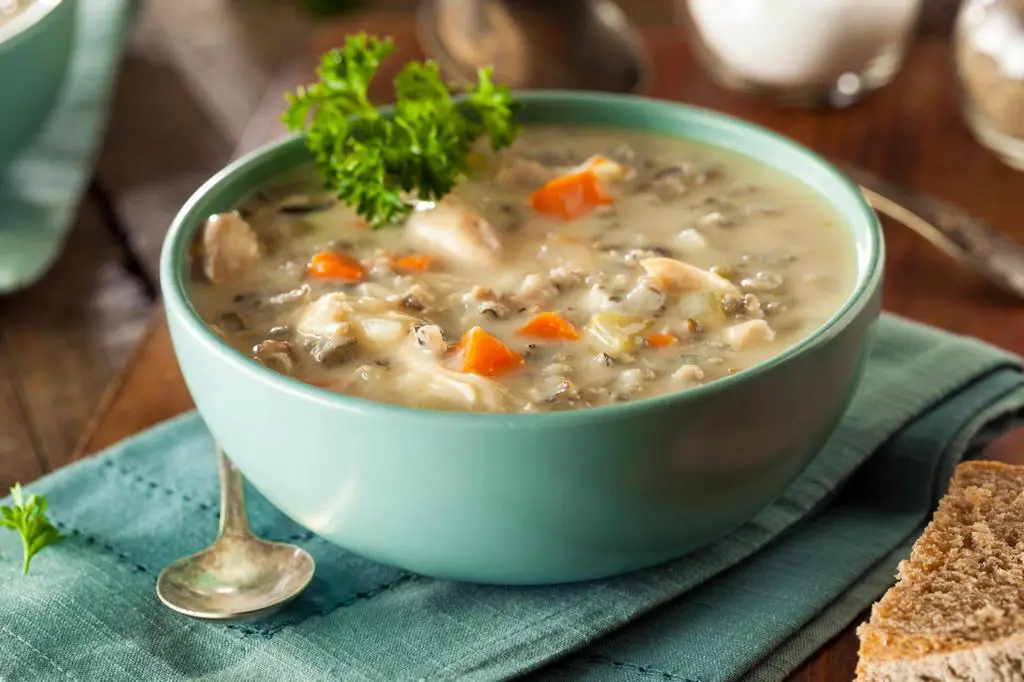
Reheating chicken soup not only warms your body but also provides a second chance at enjoying this delicious dish. However, whether storing leftovers or planning on multiple rounds of reheating, food safety should always be prioritized.
It is generally safe to reheat chicken soup twice, as long as it has been stored properly and heated thoroughly each time. To maintain optimal safety measures while preserving flavor:
1. Refrigerate Promptly: After enjoying your initial serving of chicken soup, allow it to cool before transferring it into airtight containers or sealable bags. Place these containers in the refrigerator within two hours of cooking.
2. Use Within 3-4 Days: When properly refrigerated below 40°F (4°C), leftover chicken soup can be safely consumed within three to four days after cooking.
3. Heat Thoroughly: Reheat leftover portions by placing them in a saucepan on the stovetop over medium heat or using a microwave-safe bowl in the microwave oven at regular intervals until steaming hot throughout—stirring occasionally for even heating.
| Also see: How to Reheat Pasta With Sauce Without Drying It Out? |
How Many Times Can You Safely Reheat Chicken Soup?
It is important to follow the right food safety steps when reheating chicken soup. According to experts, it is generally safe to reheat chicken soup two times. Any more than that can increase the risk of bacterial growth and potential foodborne illnesses.
To ensure the safety of your soup, follow these guidelines:
1. Pay attention to storage: Properly storing your chicken soup in airtight containers or freezer bags can help maintain its quality over time. Make sure the cooked soup is cooled down quickly before placing it in the refrigerator. Leftover chicken soup should be consumed within three to four days if refrigerated, or up to two months if frozen.
2. Reheat only what you need: It’s best not to reheat the entire batch of leftover chicken soup all at once unless you are serving a large group. Instead, portion out what you need and heat only that amount using either a stovetop or microwave to reheat leftover food.
Risks Associated with Reheating Chicken Soup Multiple Times
Reheating chicken soup more than once may come with some unwanted consequences. You may want to look closer at the below risks.
a) Bacterial Growth During Cooling and Storage Periods
When it comes to reheating chicken soup, one of the primary concerns is bacterial growth. The cooling and storage periods are crucial in preventing harmful bacteria from multiplying and making the soup unsafe for consumption.
Care must be taken to cool the soup quickly, as slow cooling can create an environment that promotes bacterial growth. Ideally, you should transfer the hot soup into shallow containers or divide it into smaller portions before refrigeration. This allows for faster cooling since a large volume of hot liquid takes longer to reach safe temperatures in the refrigerator.
b) Nutritional Loss Due To Repeated Heating
While ensuring food safety is paramount when reheating chicken soup multiple times, there is another aspect worth considering: nutritional content loss caused by repeated heating. Heat exposure can lead to nutrient degradation or loss in certain foods.
The longer any food item stays exposed to heat sources such as stovetops or microwaves, vitamins like thiamine (B1), vitamin C, and vitamin B complex tend to degrade rapidly due to heat sensitivity. Although some vitamins remain stable even after being heated once or twice, they still diminish every additional time you put your chicken soups on fire!
c) Quality Deterioration
Repetitive reheating alters the taste and texture of chicken soup. Ingredients may become mushy, and flavors may lose their vibrancy. The soup’s quality gradually declines, affecting its appeal and potentially leading to a less enjoyable dining experience.
You need to consider ways of preserving as much nutrition as possible when reheating leftovers like chicken soups: avoiding excessive heating timeframes at high temperatures while watching out for complete evaporation that can cause concentrated substances that might hinder the digestion process too!
| Read: Can You Fry Already Cooked Chicken? |
Benefits of Proper Storage and Reheating Techniques
Properly storing and reheating chicken soup can not only help maintain its warmed-over flavor of chicken and quality but also prevent the growth of harmful bacteria. To ensure the safety of your leftovers, it’s important to follow a few simple guidelines.
Firstly, when it comes to cooling and storing chicken soup, remember that time is of the essence. The longer food stays in the danger zone temperature range (between 40°F and 140°F), the higher the risk of bacterial growth.
To minimize this risk, cool down your soup as quickly as possible before transferring it into suitable storage containers. A good rule of thumb is to divide large batches into smaller portions to facilitate faster cooling.
Best Practices for Safe Reheating
When it comes to reheating chicken soup, following best practices is crucial to ensuring both food safety and maximum flavor preservation. Here are step-by-step instructions on how to safely reheat leftover chicken soup:
1. Thaw the Soup
If your chicken soup is frozen, thaw it in the refrigerator overnight before reheating. This ensures even heating throughout and reduces the risk of bacterial growth.
2. Heat Gradually
When reheating, avoid high heat settings that can result in uneven cooking or scorching. Instead, use a medium-low heat setting on your stovetop or microwave. Gradual heating not only prevents overcooking but also helps distribute flavors evenly.
3. Stir Occasionally
While warming up the soup, gently stir it occasionally to promote consistent temperature distribution and prevent any burning at the bottom of the pot or bowl.
4.Restore Moisture
Over time, soups tend to thicken due to the evaporation of liquids during storage. To restore moisture levels before reheating, add a small amount of water or broth until you achieve your desired consistency.
Reheated food should reach an internal temperature above 165°F (74°C) to kill any potential bacteria, making it safe to consume; however, repeated reheating can affect the taste of the chicken and the texture of the soup. While you can certainly reheat chicken soup twice if handled correctly, it’s essential to consider proper storage conditions and adhere to strict hygiene guidelines during each reheating process.
Signs That Your Chicken Soup Has Gone Bad
When it comes to reusing and eating cold leftovers, you need to know the signs of spoilage in chicken soup. While reheating soup is generally safe, consuming spoiled or contaminated food can result in foodborne illnesses. To ensure your health and safety, here are some noticeable signs that your chicken soup may have gone bad.
One of the most obvious indicators is a change in color. Freshly made chicken soup typically has a golden or light yellow hue due to the broth and ingredients used. However, if you notice any discoloration, such as grey or green patches, it’s a good indication that something isn’t right and the soup should not be consumed.
Another aspect to observe is texture. If your once smooth and uniform consistency now appears lumpy or slimy, this could be an indicator of bacterial growth. The presence of these changes suggests spoilage and warrants avoiding consumption.
Lastly, pay close attention to smells. A pungent odor coming from reheating chicken soup might suggest microbial activity or fermentation processes occurring within the dish. Trust your senses; if something smells off or is foul beyond its usual aroma, erring on the side of caution is advisable.
| Also: Can You Reheat Chicken Nuggets Twice? |
Conclusion
In conclusion, reheating chicken soup multiple times can pose potential risks to both food safety and taste. It is generally recommended that you reheat chicken soup only once to ensure that it remains safe for consumption. Each time you heat the soup, it undergoes a cycle of cooling and reheating, which creates an environment where bacteria can thrive and multiply.
To maintain the quality and safety of your leftover chicken soup, follow these best practices: store leftovers properly, reheat thoroughly, and portion it out.
Remember, while reheating leftovers is a convenient way to enjoy your favorite meals again later on, proper handling and following food safety guidelines are essential for ensuring that your meals remain both delicious and safe to eat.


